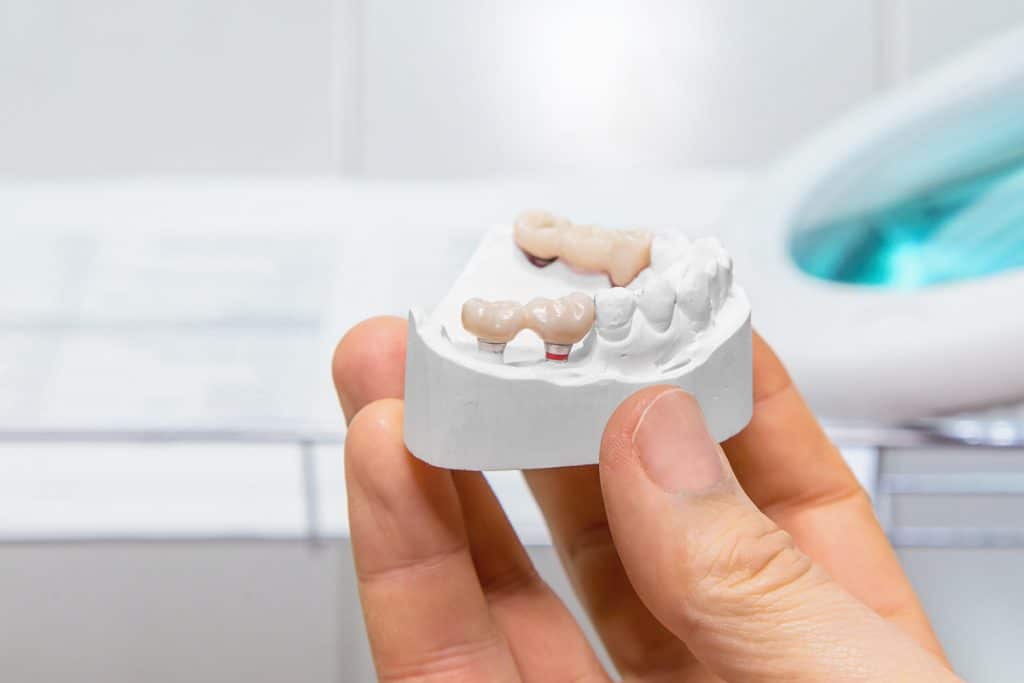How Long Do Dental Bridges Last?

A dental bridge is a helpful appliance that replaces missing teeth. Bridges complete your natural smile while preserving your oral health.
Typically, a dental bridge lasts between five and 15 years. It may last longer with ideal home care and regular dental visits.
About Dental Bridges
A dental bridge is a structure holding artificial teeth. The artificial teeth, also called pontics, sit between existing natural teeth. The pontics are attached to crowns or implants called abutments at either side of the gap.
Advantages of Dental Bridges
- Complete a healthy smile
- Keep teeth from moving
- Protect against tooth decay and gum disease
Types of Dental Bridges
Traditional Bridge
A traditional dental bridge consists of pontics placed between two crowned abutments. These bridges are highly durable and provide excellent chewing ability.
Cantilever Bridge
A cantilever bridge connects only one side of the gap between teeth. Because it exerts more pressure on the abutment tooth, it may not last as long as a conventional bridge.
Maryland Bridge
This type of bridge has a different construction. Rather than connecting the replacement teeth to crowns or implants, the dentist cements the pontics to a metal structure secured to the back of the teeth. Maryland bridges are not quite as strong as traditional bridges but may be appropriate in certain situations.
Implant-Supported Bridge
An implant-supported bridge combines the sturdiness of a traditional bridge with the high-tech addition of dental implants. Since the pontics connect to implanted abutments, the bridge does not damage adjacent healthy teeth.
The Process of Receiving a Dental Bridge
Step 1: Consultation
When you inform your dentist that you want to discuss getting a bridge, they will schedule a consultation to determine your needs. Your dentist will examine your teeth and let you know whether a bridge works or another solution may be preferred.
Step 2: Preparing Your Teeth
Your dentist will shape the healthy teeth on either side of the gap. They will take digital or physical impressions for the crowns and pontics to match your natural teeth.
Your doctor will provide a temporary bridge to wear until the lab fabricates your permanent bridge.
Step 3: Placing the Permanent Bridge
Your practitioner will remove the temporary bridge and clean any remaining cement or debris. Then, for your comfort, you will receive local anesthesia before placing the prosthetic.
Your dentist will carefully check the fit to ensure a natural bite. It may take a few weeks for the gums and cheeks to become accustomed to wearing the bridge.
Step 4: Continuing Care
Follow-up care is vital for any dental prosthetic, especially a bridge. Keep all scheduled visits for cleanings and exams. Your dentist will want to monitor your bridge's health.
How to Help Your Bridge Last Longer
- Brush at least twice daily, after every meal if possible
- Brush your bridge with a soft toothbrush and non-abrasive fluoride toothpaste
- Floss under the bridge daily with a floss threader or interproximal brush (available at any pharmacy)
- Use antibacterial mouthwash
- Do not bite non-food objects like fingernails, pens, or ice
- Avoid eating hard or crunchy foods with the bridge
- Avoid tobacco and limit alcohol to keep from staining your bridge
Frequently Asked Questions About Dental Bridges
What should I do if my bridge breaks?
If your bridge breaks, call your dentist immediately. If you try to fix the bridge yourself, you can cause permanent damage. If there are sharp edges while you wait to see the dentist, cover them with orthodontic wax. You can find this wax in the oral care section at the pharmacy.
How do bridges reduce tooth decay and gum disease?
An empty tooth socket in your mouth could contribute to oral health problems like decay and gum disease. Food and plaque may collect in the gap, creating a breeding ground for bacteria. In addition, bridges prevent teeth from slipping out of place and becoming crowded. Since brushing and flossing crowded teeth is more challenging, decay and gum issues may occur.
Call Dr. Kim Arnold Family Dentistry
If you have missing teeth, you know how seeing your smile in the mirror feels. A bridge is a practical, efficient way to replace missing teeth and improve your smile and quality of life. Please call our Russell, KY office at (606) 836-6022 to schedule your appointment today.
